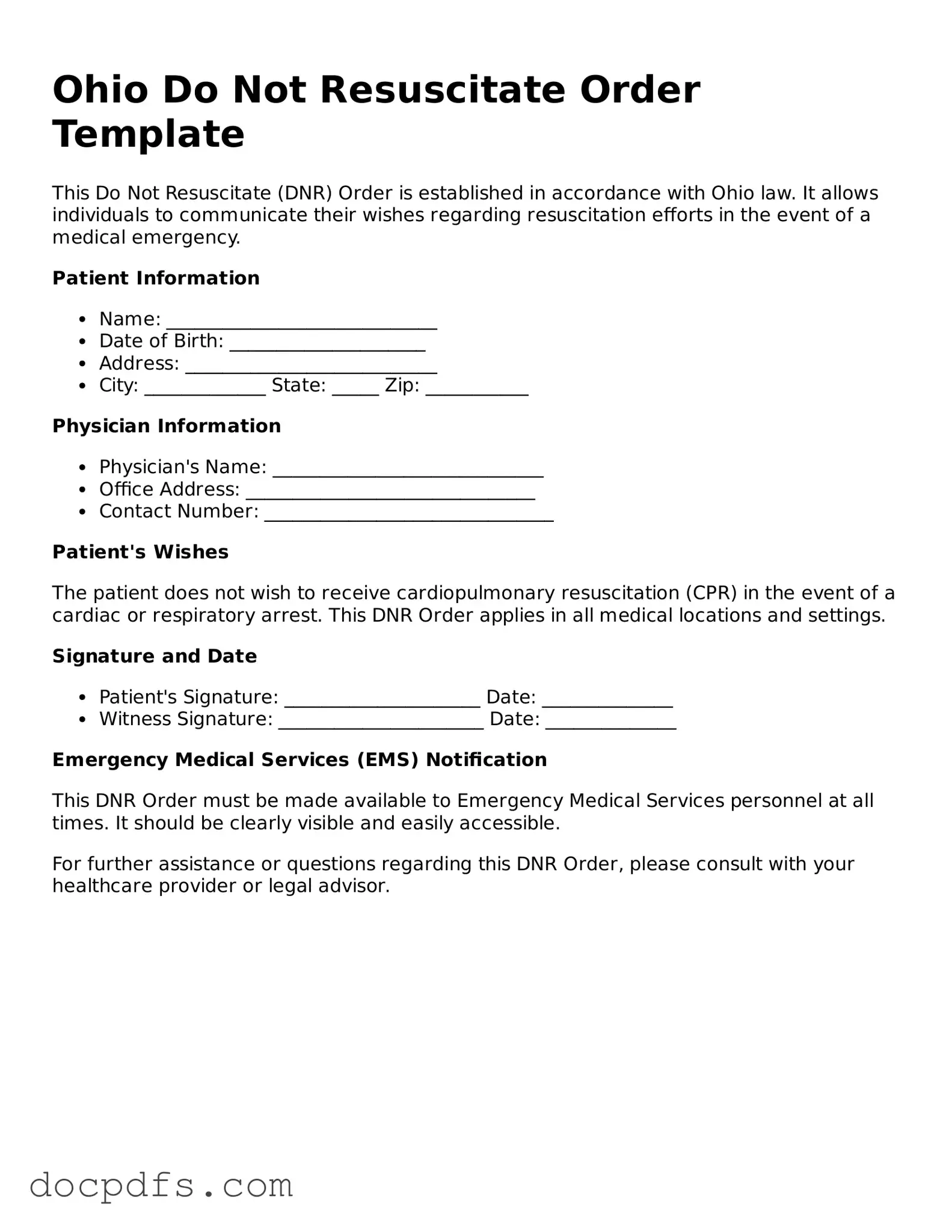What is a Do Not Resuscitate (DNR) Order in Ohio?
A Do Not Resuscitate Order (DNR) is a legal document that allows a person to refuse resuscitation efforts in the event of a medical emergency. In Ohio, this order specifically instructs healthcare providers not to perform cardiopulmonary resuscitation (CPR) or other life-saving measures if the individual’s heart stops or they stop breathing. The DNR order is typically used by individuals with serious health conditions or those who wish to avoid aggressive medical interventions at the end of life.
Who can request a DNR Order in Ohio?
In Ohio, a DNR order can be requested by the following individuals:
-
The patient, if they are of sound mind and able to make their own medical decisions.
-
A legal guardian or a person with power of attorney for healthcare decisions, if the patient is unable to make decisions.
-
Healthcare providers may also initiate discussions regarding DNR orders for patients who are terminally ill or in a persistent vegetative state.
How is a DNR Order completed and documented?
To complete a DNR order in Ohio, the following steps should be taken:
-
The patient or authorized individual must fill out the Ohio DNR order form, which includes personal information and specific instructions regarding resuscitation.
-
After completion, the form must be signed by the patient or their representative and a physician.
-
The signed DNR order should be kept in a location that is easily accessible to healthcare providers, such as a medical record or a visible spot in the patient’s home.
Will a DNR Order affect other medical treatments?
No, a DNR order specifically pertains to resuscitation efforts. It does not impact other medical treatments or interventions. Patients with a DNR order are still entitled to receive comprehensive medical care, including pain management and other supportive treatments. Healthcare providers will continue to provide necessary medical assistance, except for resuscitation measures.
Can a DNR Order be revoked?
Yes, a DNR order can be revoked at any time by the patient or their authorized representative. To revoke the order, the individual should inform their healthcare provider and remove or destroy any copies of the DNR order form. It is essential to communicate the revocation clearly to ensure that all healthcare providers are aware of the change in the patient's wishes.
What should I do if I have questions about DNR Orders?
If there are questions or concerns regarding DNR orders, it is advisable to consult with a healthcare provider or an attorney who specializes in healthcare law. They can provide guidance on the implications of a DNR order, assist with the completion of the form, and address any legal considerations. Additionally, many hospitals and healthcare facilities have resources available to help patients and families understand DNR orders and their options.
